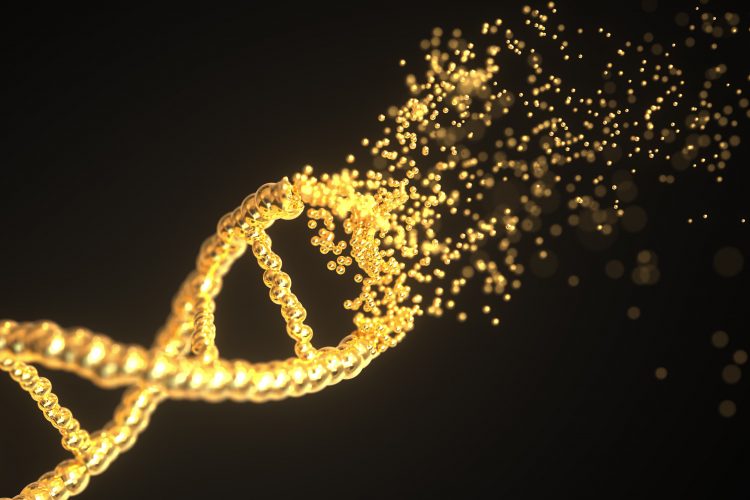CRISPR editing can result in whole chromosome elimination, say scientists
Posted: 2 November 2020 | Hannah Balfour (Drug Target Review) | No comments yet
In a new study, scientists identify some of the pitfalls when using CRISPR Cas9 to correct mutations in human embryos, such as the destruction of whole chromosomes.


Researchers have found that using the CRISPR Cas9 gene editing tool to correct genetic mutations in human embryos can have some undesirable outcomes, including whole chromosome deletion. The team hope their study will act as a warning against using this technique prematurely in clinic and help guide the tool’s responsible and safe use in future.
The paper published in Cell is the most detailed analysis of CRISPR use in human embryos to date, according to the research team. In the study they show that applying CRISPR to repair a blindness-causing gene early in the development of a human embryo frequently resulted in the elimination of the whole chromosome on which it was located or the removal of a large section of it.
“Our study shows that CRISPR Cas9 is not yet ready for clinical use to correct mutations at this stage of human development,” said the study’s senior author Dieter Egli, assistant professor of developmental cell biology in the Department of Pediatrics at Columbia University Vagelos College of Physicians and Surgeons, US.
CRISPR in human embryos
The CRISPR Cas9 genome editing system has revolutionised molecular biology since its discovery to such an extent that the discoverers were awarded the 2020 Noble Prize in Chemistry. The system allows scientists to make precise changes in the genomes of cultured cells, living tissues and animal embryos.
The first use of CRISPR in human embryos was reported in 2015. Not long after, in 2018, He Jiankui claimed to have used CRISPR to repair a defect in a pair of twins, eliciting a firestorm of condemnation from scientists and government officials worldwide.
CRISPR and chromosomal abnormalities
In their new paper, Egli and his colleagues evaluated the effects of CRISPR Cas9 genome editing in early-stage human embryos carrying a mutation in a gene called EYS (eyes shut homolog), which causes hereditary blindness.
![Diagram showing how using CRISPR Cas9 gene editing can either repair the mutation or result in a broken chromosome. According to the study, either is equally as likely [Credit: Zuccaro et al.].](https://www.drugtargetreview.com/wp-content/uploads/CRISPR-embryo-gene-editing.jpg)
![Diagram showing how using CRISPR Cas9 gene editing can either repair the mutation or result in a broken chromosome. According to the study, either is equally as likely [Credit: Zuccaro et al.].](https://www.drugtargetreview.com/wp-content/uploads/CRISPR-embryo-gene-editing.jpg)
Diagram showing how using CRISPR Cas9 gene editing can either repair the mutation or result in a broken chromosome. According to the study, either is equally as likely [Credit: Zuccaro et al.].
“We know from previous studies in differentiated human cells and in mice that a break in the DNA results in mostly two outcomes: precise repair or small local changes. At the EYS gene, these changes can yield a functional gene, though it is not a perfect repair,” said Michael Zuccaro, a PhD candidate at the Vagelos College of Physicians and Surgeons and co-lead author of the paper.
When Zuccaro, Egli and their colleagues looked at the entire genomes of the modified embryos in this study, they identified a third, routinely occurring and undesirable outcome: “We learned that in human embryonic cells, a single break in the DNA can result in… the loss of an entire chromosome or sometimes a large segment of that chromosome, and this loss of the chromosome is very frequent,” explained Zuccaro.
According to the team, these results indicate that there may be some alternative interpretations to reports of successful mutation repairs; ie, instead of correcting mutations, they may have resulted in the elimination of the entire chromosome carrying the defect.
“If our results had been known two years ago, I doubt that anyone would have gone ahead with an attempt to use CRISPR to edit a gene in a human embryo in the clinic,” Egli said. “Our hope is that these cautionary findings should discourage premature clinical application of this important technology but can also guide responsible research to achieve its ultimate safe and effective use.”
Related topics
CRISPR, Genome Editing, Genomics
Related conditions
blindness, genetic mutation
Related organisations
Columbia University Vagelos College of Physicians and Surgeons
Related people
Dieter Egli, Michael Zuccaro







